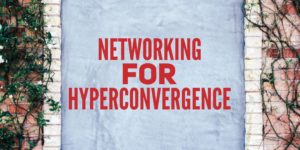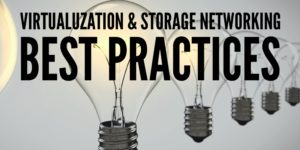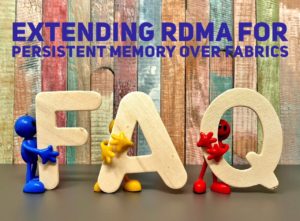Intro to Incast, Head of Line Blocking, and Congestion Management
For a long time, the architecture and best practices of storage networks have been relatively well-understood. Recently, however, advanced capabilities have been added to storage that could have broader impacts on networks than we think.
The three main storage network transports – Fibre Channel, Ethernet, and InfiniBand – all have mechanisms to handle increased traffic, but they are not all affected or implemented the same way. For instance, utilizing a protocol such as NVMe over Fabrics will offer very different methodologies for handling congestion avoidance, burst handling, and queue management when looking at one networking in comparison to another. Read More
 In the last few years, Ethernet equipment vendors have announced big increases in line speeds, shipping 25, 50, and 100 Gigabits-per -second (Gb/s) speeds and announcing 200/400 Gb/s. At the same time Fibre Channel vendors have launched 32GFC, 64GFC and 128GFC technology while InfiniBand has reached 200Gb/s (called HDR) speed.
But who exactly is asking for these faster new networking speeds, and how will they use them? Are there servers, storage, and applications that can make good use of them? How are these new speeds achieved? Are new types of signaling, cables and transceivers required? How will changes in PCIe standards and bandwidth keep up? And do the faster speeds come with different distance limitations?
In the last few years, Ethernet equipment vendors have announced big increases in line speeds, shipping 25, 50, and 100 Gigabits-per -second (Gb/s) speeds and announcing 200/400 Gb/s. At the same time Fibre Channel vendors have launched 32GFC, 64GFC and 128GFC technology while InfiniBand has reached 200Gb/s (called HDR) speed.
But who exactly is asking for these faster new networking speeds, and how will they use them? Are there servers, storage, and applications that can make good use of them? How are these new speeds achieved? Are new types of signaling, cables and transceivers required? How will changes in PCIe standards and bandwidth keep up? And do the faster speeds come with different distance limitations?  Many followers (dare we say fans?) of the SNIA Networking Storage Forum (NSF) are familiar with our popular webcast series “
Many followers (dare we say fans?) of the SNIA Networking Storage Forum (NSF) are familiar with our popular webcast series “ Hyperconverged infrastructures (also known as “HCI”) are designed to be easy to set up and manage. All you need to do is add networking. In practice, the “add networking” part has been more difficult than most anticipated. That’s why the SNIA Networking Storage Forum (NSF) hosted a live webcast “
Hyperconverged infrastructures (also known as “HCI”) are designed to be easy to set up and manage. All you need to do is add networking. In practice, the “add networking” part has been more difficult than most anticipated. That’s why the SNIA Networking Storage Forum (NSF) hosted a live webcast “
 Unlike traditional local or scale-up storage, scale-out storage imposes different and more intense workloads on the network. That’s why the SNIA Networking Storage Forum (NSF) hosted a live webcast “
Unlike traditional local or scale-up storage, scale-out storage imposes different and more intense workloads on the network. That’s why the SNIA Networking Storage Forum (NSF) hosted a live webcast “ Ever make a mistake configuring a storage array or wonder if you’re maximizing the value of your virtualized environment? With all the different storage arrays and connectivity protocols available today, knowing best practices can help improve operational efficiency and ensure resilient operations. That’s why the SNIA Networking Storage Forum is kicking off 2019 with a live webcast “
Ever make a mistake configuring a storage array or wonder if you’re maximizing the value of your virtualized environment? With all the different storage arrays and connectivity protocols available today, knowing best practices can help improve operational efficiency and ensure resilient operations. That’s why the SNIA Networking Storage Forum is kicking off 2019 with a live webcast “ In our most recent SNIA Networking Storage Forum (NSF) webcast
In our most recent SNIA Networking Storage Forum (NSF) webcast